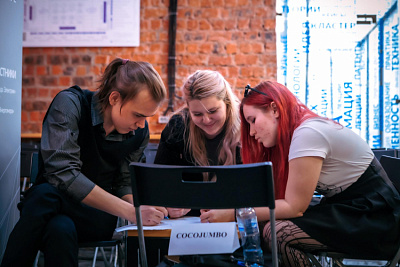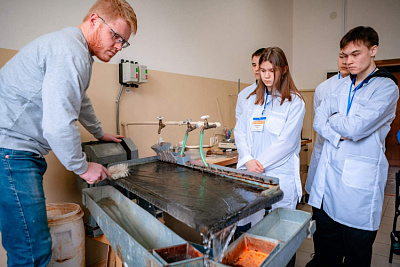INRTU Young Scientists and N. D. Zelinsky Institute of Organic Chemistry (ZIOC) of the Russian Academy of Sciences Published an Article in the Prestigious Journal of Chemical Science (Q1)
Young scientists of INRTU and A.E. Favorsky Irkutsk Institute of Chemistry have published an article in the international journal Chemical Science (Q1). A.E. Favorsky, working in the laboratory of photoactive compounds, have published an article in the international journal Chemical Science, which belongs to the first quartile in the field of chemistry, multidisciplinary (Web of Science).
According to the head of the laboratory, Doctor of Chemical Sciences Andrey Lvov, Chemical Science is the flagship journal of the Royal Society of Chemistry:

"I have never published experimental work in journals of this level before. The research was carried out by INRTU PhD student Yumzhana Bolotova and INRTU graduate Alexander Ustyuzhanin, who is now studying at the Institute of Organic Chemistry in Moscow. Ekaterina Sergeeva and Anna Faizdrakhmanova, INRTU students, and Andrey Stepanov, a PhD student, contributed to the work."
According to Andrey Lvov, one of the problems of modern chemistry is to carry out chemical processes in non-toxic ("green") solvents, the most important of which is water. Employees of the laboratory have found a solution to "transfer" the photochemistry of a whole class of organic compounds, diarylethanes, from conventional organic solvents to water.
"We have developed the first versatile class of water-soluble diarylethanes, which are potassium salts of 2,3-diarylmaleic acid. Depending on their structure, these compounds can undergo all the typical photochemical reactions of diarylethanes, from reversible cyclization (photo-switching) to rearrangement and oxidative cyclization, in water.
The availability and versatility of potassium 2,3-diarylmaleates allows us to consider them as promising photosensitive agents for use in photopharmacology," emphasizes Andrey Lvov.
This work would not have been possible without the collaboration of our colleagues from other organisations. For example, Professor Lei You's group at the Fujian Institute of Matter Structure Research (China) synthesised a key precursor of potassium diarylmaleate for this project, and Professor Konstantin Lysenko of Moscow University carried out X-ray structural analyses of six compounds.
It should be noted that Doctor of Chemical Sciences Andrey Lvov has managed to create a stable scientific team conducting world-class basic research in the field of organic chemistry. Under his guidance, young scientists study organic compounds capable of reversible and irreversible transformations under the influence of light. In the first case, they are called photochromes (or switches). Such compounds are used in the creation of new materials and technologies that use light as a non-invasive method of acting on molecules with high spatial and temporal resolution. Irreversible photochemical reactions are primarily of interest in organic synthesis, but may also have applications in materials chemistry.
LINK TO ARTICLE https://pubs.rsc.org/en/content/articlelanding/2023/sc/d3sc02165c
Photo: INRTU Press Service



